A year after Las Vegas: America's forgotten tragedy and its forgotten victims
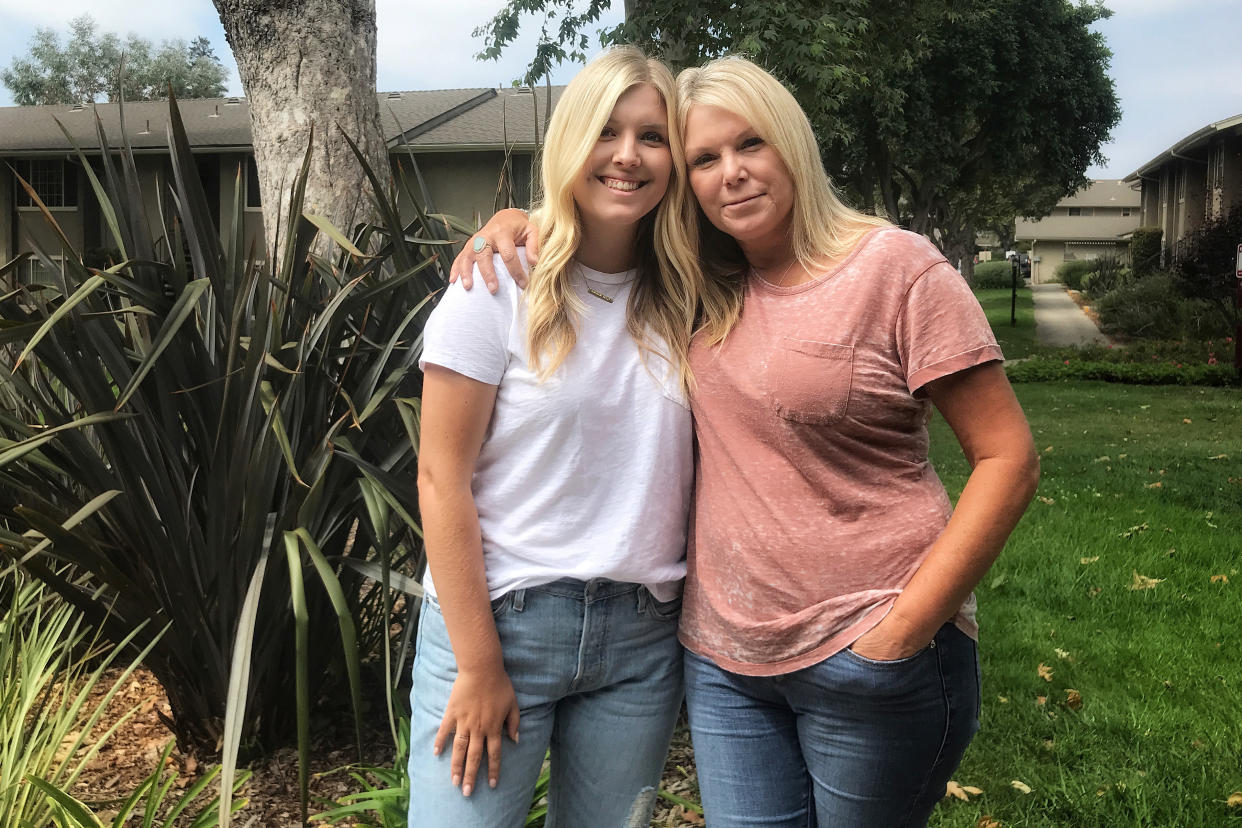
SANTA BARBARA, Calif. — Hope Morrison still can’t forget the sound of those first gunshots. Sometimes the most mundane noise brings it all back, that slow pop-pop-pop that erupted about 25 minutes after country singer Jason Aldean had taken the stage at the Route 91 Harvest music festival in Las Vegas last Oct. 1. She had dropped to the ground instantly, sensing that something was wrong, but not yet realizing that her life would never be the same.
It was the third year in a row that she and her mother, Carlynn Rose, had attended the three-day country music festival, but last year’s concert had been special. Morrison was celebrating her 21st birthday, so her boyfriend, Austin, had come along for the annual trip, along with Rose’s boyfriend, Art. For the first two days, the four had been near the front of the stage, watching their favorite performers. But that Sunday night, they had decided to hang back, standing several dozen yards away in a less crowded area along the left side of the stage.
A little tired from the first two days of the festival, the four had decided not to drink that day. And when the group arrived that Sunday afternoon for the final hours of the festival, they had picked their spot and then talked about how to get out if something went wrong — a conversation they hadn’t had before. There were a few exits around them, but strangely, most appeared to be blocked, so they scouted other ways out. “I don’t know why we talked about it, but for some reason, we did,” Rose recalled.
It would prove to be a fateful conversation. Hours later, about 10:05 p.m., the first crack of gunfire echoed across the concert grounds, located on the far southern end of the Las Vegas Strip across the street from the Mandalay Bay Resort and Casino. The three rounds, a few seconds apart, sounded to some like the pop of fireworks or maybe a malfunctioning speaker. When Morrison dropped to the ground, her mother tried to reassure her. “I was like, ‘You’re fine! Get up. What are you doing? It’s no big deal. We’re good,’” Rose recalled.
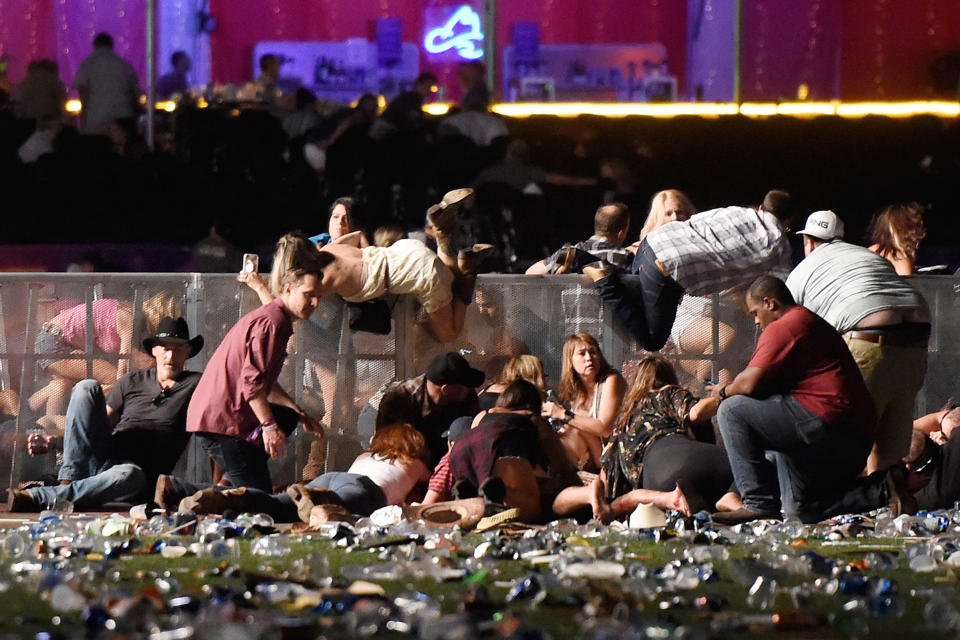
But seconds later, a volley of automatic gunfire blasted into the crowd of an estimated 22,000 people, chasing Aldean from the stage and sending concertgoers in the open-air venue scrambling for cover. As the people around them began screaming in panic, Rose fell to the ground near her daughter, quickly assessing what to do next. When the gunfire stopped, the four jumped up and tried to run but crouched again as another explosion of shots rang out. Two hulking men fell on top of Morrison, and when the shooting paused once again, Rose went into what her daughter calls “mama bear” mode, quickly pulling Morrison to her feet and throwing other panicked concertgoers aside.
Rose led the group to a fence near the left side of the stage. It was too tall to climb, so she and the others began kicking the fence down. As it fell, another spray of gunfire erupted — this one sounding louder and longer than before; at least a few hundred rounds. They ran and dove under semi trucks parked in a dirt lot across from the venue, as the jackhammer sound of spraying bullets seemed unending.
“I thought it was someone on the ground, somebody just walking through the festival shooting, or that it was multiple people,” Morrison recalled. “Underneath the truck, it just got louder and louder, like it was getting closer to us.”
That’s because it was. According to an investigative report released last month by the Las Vegas Metropolitan Police Department, Stephen Paddock — the sniper who had taken aim at the festival from a perch inside his hotel suite on the 32nd floor at Mandalay Bay — had shifted his aim away from the concert grounds to fire at two fuel tanks along the outer edge of McCarran International Airport, on the opposite side of the dirt lot. The goal, police have speculated, was to blow the tanks up as fleeing spectators ran toward them, causing more death and mayhem. But although the tanks were pierced by two bullets, they didn’t explode.
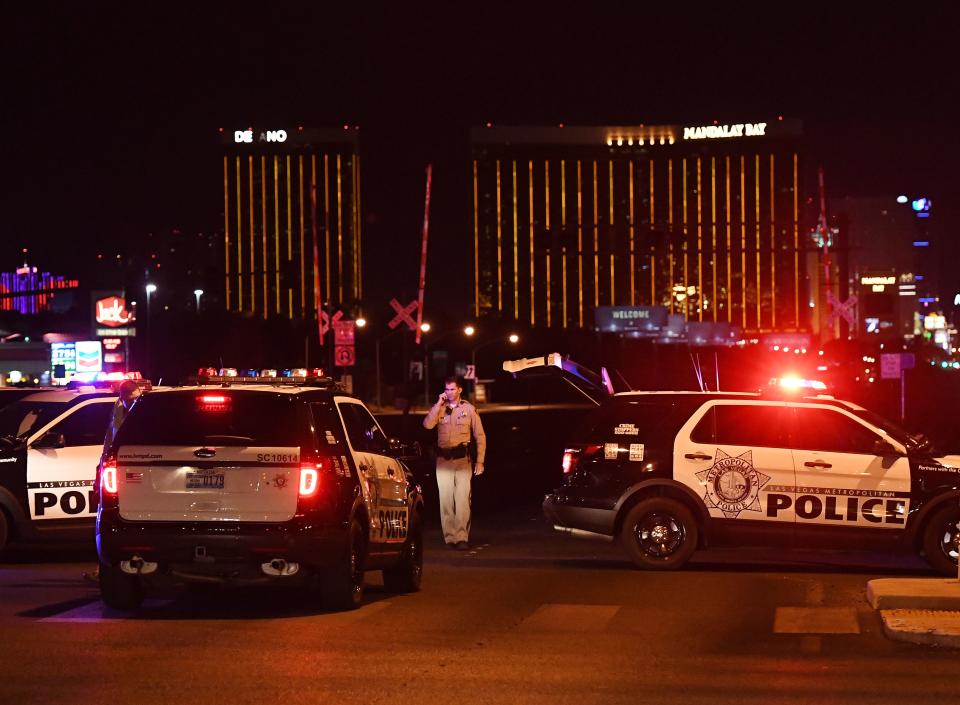
Still unsure exactly what was happening and worried that the growing number of people near the truck would make them a target, the four got up and ran again. They first escaped to an office park a block or so away, but the doors were locked and they couldn’t break through the glass. The gunfire continued. Another block away, they came to a fence at the edge of the airport. Someone had driven a truck through the barbed wire to create an opening for the concertgoers running for their lives. As they ran across the tarmac toward a hangar, roughly half a mile from the gunman’s perch in the hotel, they could still hear shooting behind them. Finally, at 10:17 p.m. — after 12 minutes and more than 1,000 rounds fired — the gunfire ended.
Fifty-eight people were dead and another 869 people injured, including 413 who were shot or hit by shrapnel. Another 456 people suffered broken bones or other injuries trying to escape, according to police. The death toll does not include Paddock, who died of a self-inflicted gunshot to the head as authorities closed in on his hotel suite.
Rose and Morrison were among the fortunate that night. They were not killed or badly injured, as so many fellow concertgoers were. But they are among the untold number of survivors — potentially hundreds, if not more — who have struggled with posttraumatic stress disorder (PTSD) and other issues in the aftermath of the massacre, including flashbacks and fears of being targeted again.
The number of people dealing with PTSD after the massacre is unclear. In its final report on the shooting issued in August, the Las Vegas Metropolitan Police wrote that it “recognized that the approximate 22,000 people who attended the Route 91 Harvest music festival are all victims.” But there has not been an official accounting of concertgoers who have struggled with their mental health and emotional recovery. In many ways, they are the invisible victims of a deadly tragedy that already feels forgotten by those who did not live through it.
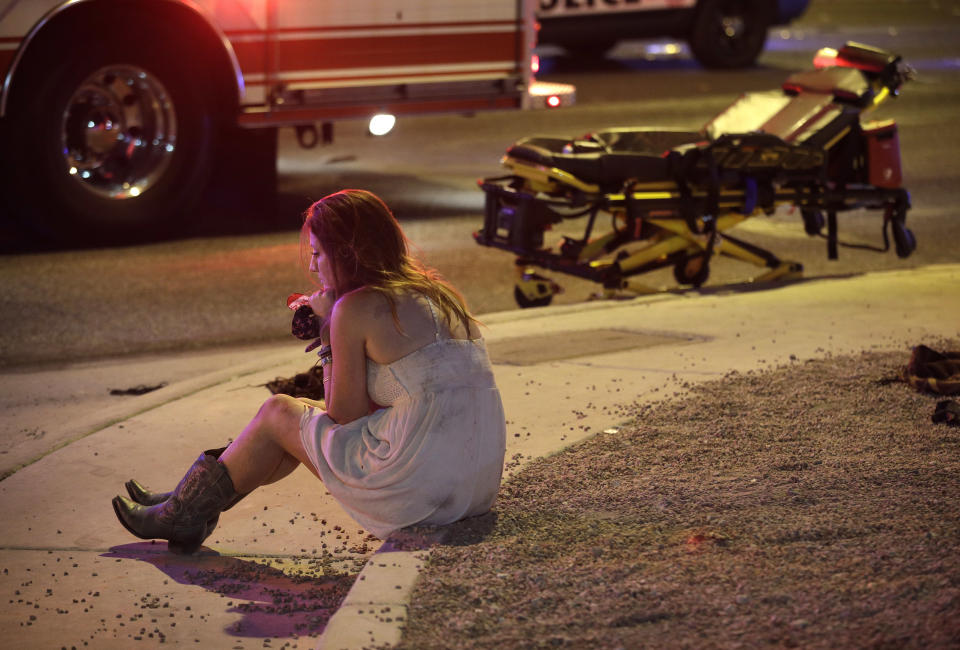
“In where we were standing, in how fast we got out of there, we are so lucky. I didn’t even have one scratch on my body,” Morrison said, as she and Rose sat for an interview at their home here in California, a state that accounts for a majority of the shooting victims, including 33 of the 58 who died.
But as the first anniversary of the attack looms, Morrison continues to struggle with the wounds you can’t see. Though she is slowly healing, the memories of that night weigh on her, as they do on many of the victims of a massacre that remains unexplained.
Over the past year, Morrison has struggled to deal with memories that can erupt without warning — of the sound of gunfire, the images of people on the ground, the chaos and hysteria and the fear that she, her mother and their friends wouldn’t make it out alive.
When she and the others returned home to Santa Barbara the next morning, Morrison was in a dark place — not physically injured but not OK either. She cried endlessly and had trouble sleeping. When she would close her eyes at night, the horror was there and inescapable. Her father, who works in the security industry, immediately arranged for her to see a therapist who usually works with service members returning from combat. He quickly diagnosed her with PTSD, telling her that her case wasn’t much different from the trauma his wartime clients had suffered.
“My therapist said that we went to war without signing up like other people do, and that’s really how it is,” Morrison said. “People that go to war are trained and know what they are supposed to do. A mass shooting feels like you’re in a war zone. But we were just normal people at a concert. You don’t know what you are supposed to do, and how you are supposed to act and where you are supposed to go, when something like this happens to you.”
What has made recovery harder for many victims of the Las Vegas massacre is the sense that they have been forgotten. The Oct. 1 attack remains the worst mass shooting in modern American history, but within days, it felt as if the public had already moved on.
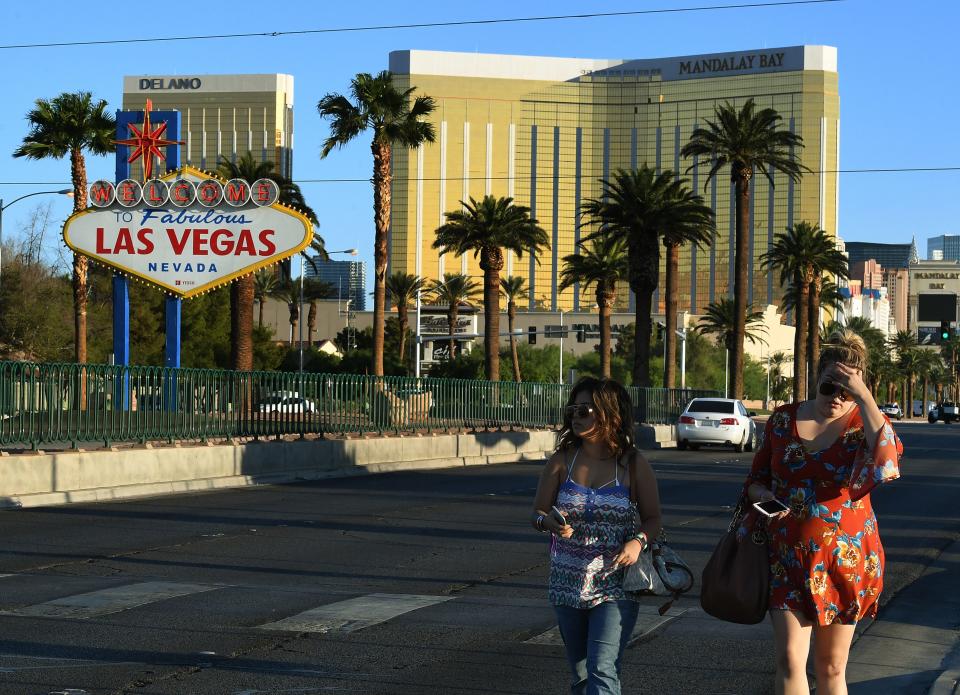
Less than 24 hours after the attack, people were already drinking and gambling at Mandalay Bay, even as agents in FBI jackets walked through what remained an active investigation scene. While signs advertising #VegasStrong were illuminated all over the city in the aftermath of the attack, as well as on casino signs and electronic billboards on the Las Vegas Strip, the slogan vanished soon enough — packed away by a city worried about the impact of the attack on its roughly $60 billion a year convention and tourism industry.
The rest of the country moved on just as quickly, distracted by the fast-moving news cycle of Trump administration drama and other big stories and, almost immediately, more mass shootings. A little over a month after the Vegas attack, a gunman killed 26 people and injured 20 others during an attack on a Sunday-morning church service in tiny Sutherland Springs, Texas. Three months after that, 17 people were shot and killed at Marjory Stoneman Douglas High School in Parkland, Fla., a tragedy that sparked the March for Our Lives movement.
What happened at Parkland was especially painful for some Las Vegas victims. One survivor who declined to be named said the shooting, like others big and small that have happened in the months since Las Vegas, brought back horrific memories because of the extensive news coverage. Especially hard were the clips that emerged from students inside the school who filmed footage with their iPhones as the attack was happening. “The videos of those kids in the classrooms, and the sound of the shots — it was too much,” said she said.
But the Vegas survivor also admitted feeling jealous of the attention paid to the Parkland victims — and the subsequent guilt she felt over having those feelings. “What has been really painful to me is that Las Vegas feels forgotten,” she said. “It feels like nobody cares what happened to us.”
If the Las Vegas massacre feels forgotten, it may be because it is a city of transients. Many of the victims weren’t from the city, and those who survived quickly returned to their communities — including the injured, who transferred to hospitals and treatment facilities closer to home. While there were memorials in Vegas — including 58 crosses that were temporarily set up in the median down the road from the attack site and a healing garden that remains open to honor those killed — most of the mourning seemed to happen in the communities where the victims were from, out of the spotlight.
That seemed to have an effect on how the country reacted in terms of mourning and contributing to funds for the families of those killed and to help survivors recover. Unlike other prominent memorial funds that have been established to help victims pay medical bills and other expenses in the aftermath of mass shootings or terror attacks, the Las Vegas Victims Fund struggled to attract donations, ultimately raising roughly $31 million, which has been distributed to a little over 500 victims or their family members. The payout ultimately did not include everyone who had applied for assistance because there wasn’t enough money.
By comparison, the OneOrlando fund set up in the aftermath of the 2016 Pulse nightclub shooting in Florida raised almost as much money — about $27 million — for a much smaller total number of victims: 299. A fund set up for survivors of the 2013 Boston Marathon bombing raised more than $60 million for the families of the four people killed (including a police officer who was shot and killed after the bombing by the attackers) and the 260 people who were injured. Speculating about why the Las Vegas fund didn’t raise more, a fundraising expert told the Los Angeles Times it was likely “compassion fatigue.”
The sense that what happened in Las Vegas has been forgotten has made the last year even more painful for many survivors, many of whom are still struggling to recover from catastrophic and life-changing injuries. Dozens of victims are still in the hospital or have been in and out of care in recent months — dealing with health complications, physical therapy or surgeries related to their gunshot wounds.
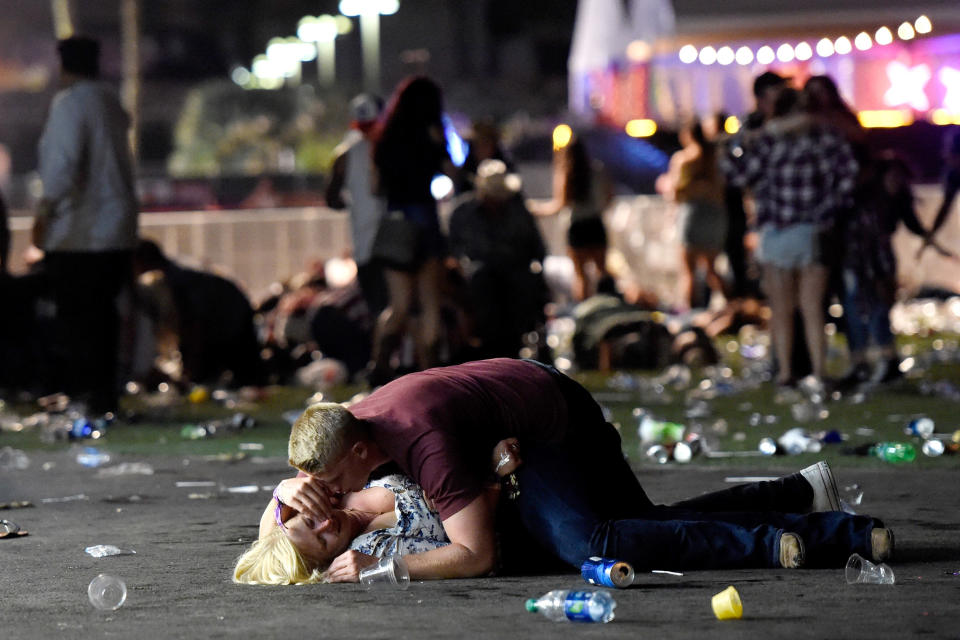
Others have tried to go on with their lives but have struggled. In a handful of private Facebook groups that have been established by survivors in the aftermath of the shooting, victims commiserate over sleepless nights, enduring nightmares and the everyday moments that often trigger panic attacks — like hearing the pop of a wine cork or being in large crowds. Others have acknowledged deep depression and suicidal thoughts, in part because of survivor guilt.
Last November, Roy McClellan — who had attended the concert with his wife, Denise, and escaped without injury — committed suicide by lying down in the middle of a highway near his home in Pahrump, Nev. His wife said he had been treated for severe depression in the aftermath of the shooting.
One survivor was set to speak to a reporter about her experience over the last year when she happened to see footage of the Aug. 26 shooting at a video game tournament in Jacksonville, Fla., where the sound of shots had been captured on a live stream. She had been avoiding the news, but this clip popped up in her Facebook feed, shared by another victim who wrote of struggling to cope. “It’s too much,” she said, canceling an interview.
Others declined to speak because they are being sued by MGM Grand — the owner of Mandalay Bay and of Las Vegas Village, the site of the festival — which filed a controversial lawsuit in July against hundreds of victims. The company isn’t seeking monetary damages, but rather protection against lawsuits from victims who say the hotel failed to offer adequate security and was negligent because it allowed Paddock to stockpile 47 guns and thousands of rounds of ammunition in his room.
MGM has argued that it is not responsible, in part because it hired an outside security vendor federally certified by the Department of Homeland Security to run security at the concert. MGM has pointed to a post-9/11 federal law that limits liabilities for companies who follow that practice. The company also argued it is immune from lawsuits because victims “remained in the line of fire at the concert” as Paddock fired from his hotel window — an assertion that has drawn outrage from survivors and families of the slain, who have said they feel as though they are being victimized all over again.
In Santa Barbara, Rose and Morrison have spent the last year counting their blessings, knowing how lucky they were to have escaped. And while life has slowly gotten back to normal, it is a new normal.
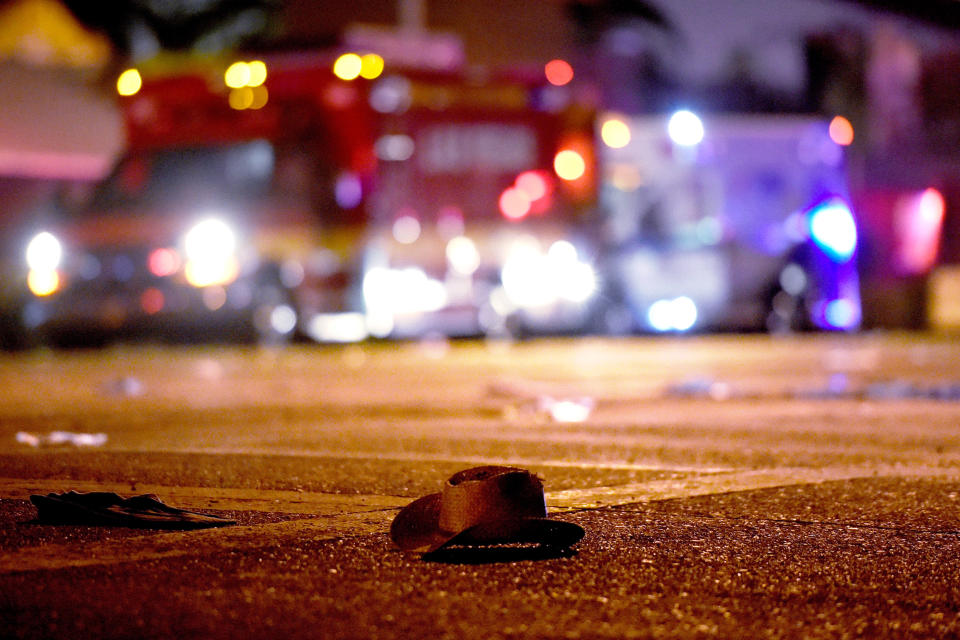
In the early months after the attack, partly on the advice of Morrison’s therapist, the two “disengaged from the world,” as Rose put it, avoiding news coverage that might trigger flashbacks. They mostly watched cartoons, including “Moana.” At the same time, they connected with other local survivors, including the parents of one of Morrison’s close friends from high school who were shot in the attack.
All of it helped. But a year later, Morrison admits she is still on edge. She is unnerved by loud noises and fears being trapped in crowds. Around the Fourth of July holiday, she and her mother left town and went to the country for several days to avoid the sound of fireworks.
“It’s tough, because I used to enjoy all these things, but now I struggle to relax. … I find it hard to be fully present,” Morrison said. “It’s hard because I’m 21 and all of my friends are into music festivals and that sort of thing. It’s the center of their world … and I can’t. I feel like I have started to stay away from anything that might make me have another traumatic experience. I don’t want anything to do with it.”
Her mother has coped differently. While Morrison has vivid memories of Oct. 1, Rose said she became solely focused on getting her group out of danger, a tunnel vision that blocked some of the more horrific aspects of the night, which she counts as a blessing. Still in “mama bear” mode, she focused on helping her daughter’s recovery and tried to maintain her normal routine, even returning to her job as a restaurant manager the day after the shooting.
But Rose has caught herself in recent months feeling twinges of anxiety. At work, she has found herself getting nervous. “I’ll catch myself thinking, ‘Nothing bad is going to happen. Everything’s fine,’” she said.
When Rose went for her annual checkup in August, her doctor asked her how her year had been. Rose, who describes herself as “not a crier,” felt herself begin to melt down. “The first thing out of my mouth was Vegas,” she said. “I felt myself getting really emotional about it. … I think, for me, the emotions about this have been much more delayed and coming out in a different way.”
Disturbed at how desensitized people have become to mass shootings and how quickly people moved on after Las Vegas, Rose has recently found herself just talking to people about the shooting — “people that don’t ask and probably don’t care,” she said.
Sitting at her dining room table, she struggles to explain why, but admits it might be to acknowledge that the awful Sunday night nearly a year ago wasn’t just a horrible nightmare. Sometimes it’s still hard to believe.
“We were in the worst mass shooting in the United States. That really happened,” Rose said. “I don’t want it to define me, but it’s a part of me now.”
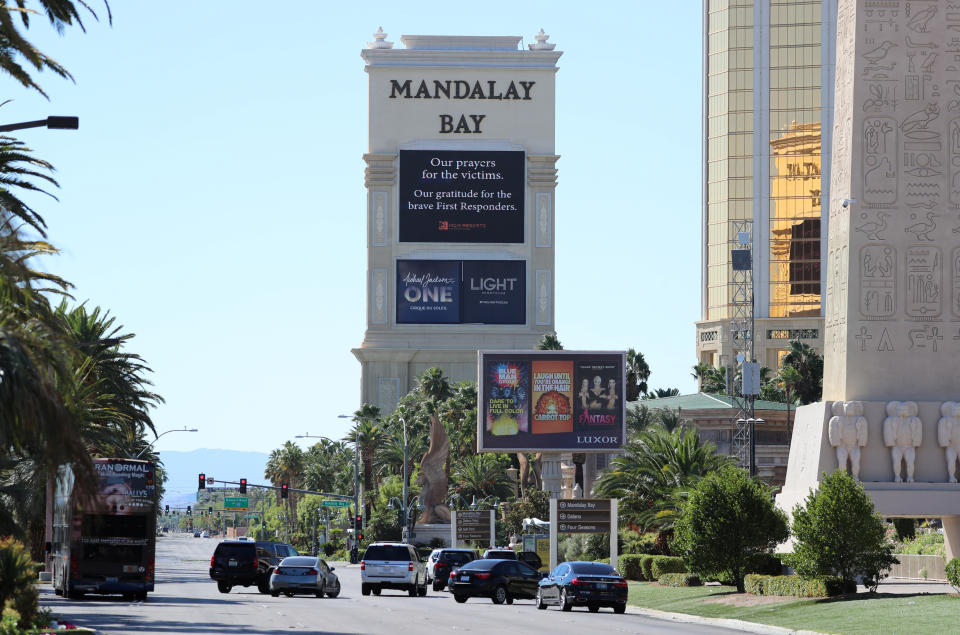
_____
Read more from Yahoo News:



